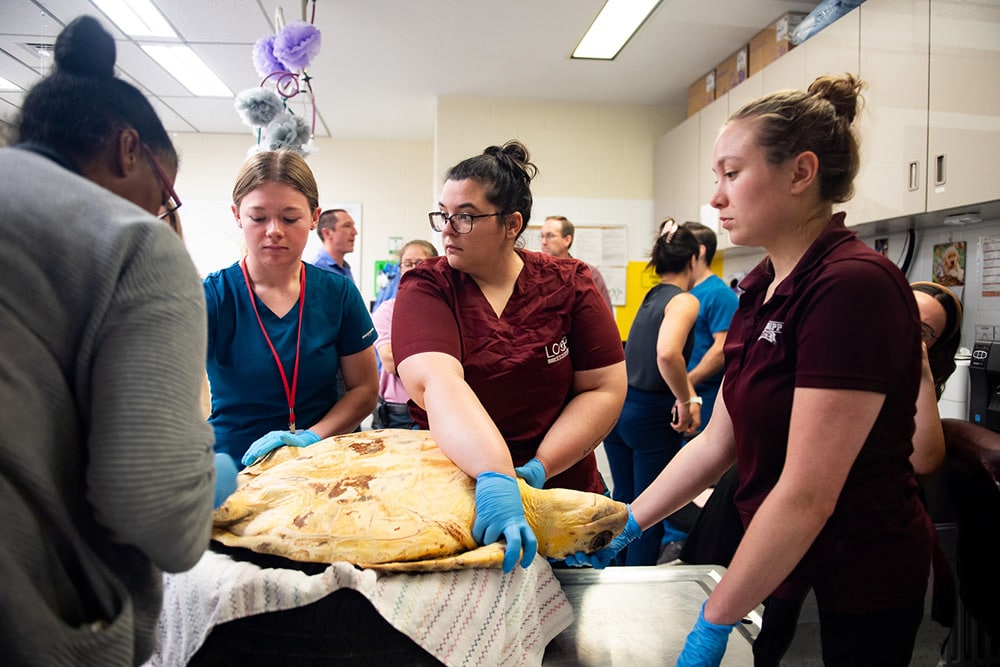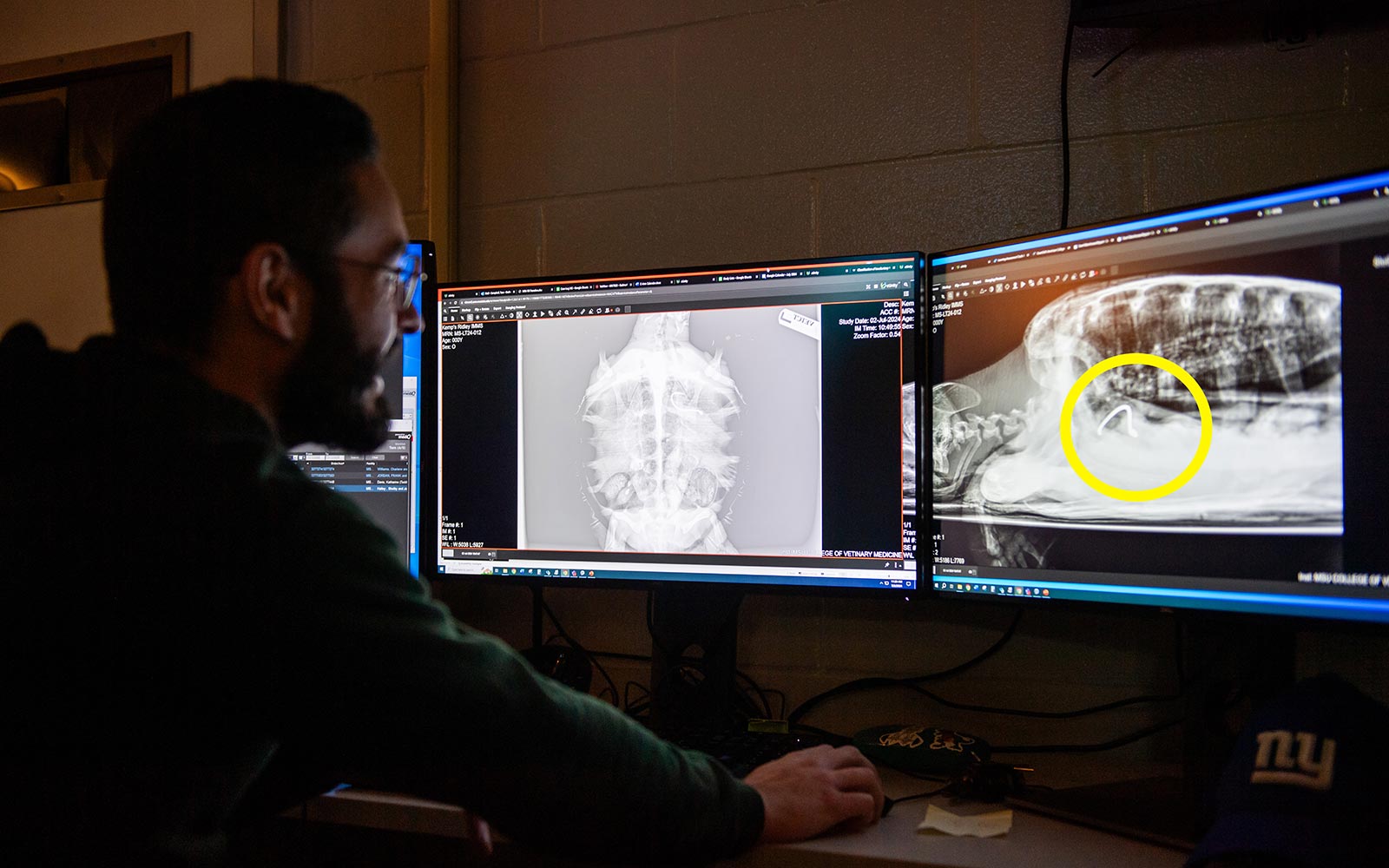One Kemp’s ridley sea turtle, among the world’s most endangered sea turtle species, has had its third successful visit for specialized care at Mississippi State University’s College of Veterinary Medicine.
Better known by university veterinarians as Toast Malone, this turtle recently arrived with a fishhook lodged in its stomach. MSU Professor and CVM Internist Dr. John Thomason performed an endoscopy to successfully remove the fishhook, saving its life.
The veterinary college has seen this specific sea turtle before—performing similar procedures and microchipping the sea turtle to track and monitor its recovery. The efforts are part of the university-based Global Center for Aquatic Health and Food Security, or GCAHFS, and its Marine Mammal and Sea Turtle Health Program—a collaboration between the MSU CVM and the Institute for Marine Mammal Studies in Gulfport.
Thomason said turtles have great geographic navigational skills, and they are likely to return to familiar areas, despite hazards they may encounter. He’s cognizant of the responsibility and the university’s role in protecting and increasing the health of such marine life through state-of-the-art procedures, study and research.
“We are giving these animals the opportunity to recover and thrive,” he said. “It is inevitable that humans are going to come in contact with marine animals, and it should be our responsibility to help these animals if they need us—especially if we move into their environment.”
Along with Toast, a loggerhead sea turtle now known as Mudpie also came to MSU CVM with two fishhooks—one caught in its esophagus and another lodged in its mouth. Both were successfully removed by Thomason, additional CVM faculty and fourth-year veterinary students.
Through the GCAHFS Gulf Coast Aquatic Health Program, CVM faculty, staff and students regularly play a key role in rehabilitation for these marine animals. Being exposed to these procedures and research opportunities provides MSU students first-hand experience that will have a lasting impact that matters.
Fourth-year Doctor of Veterinary Medicine student Kathryn Rapp from Hamburg, New York wants to pursue a career specializing in aquatic and exotic animals. She, along with several of her classmates, assisted and observed the procedure, gaining first-hand experience with the specialized case.
“This was the first time I have witnessed and assisted in using endoscopy to remove fishing hooks, it was an incredible learning experience,” she said. “As a group, we reviewed anesthetic protocols for chelonians, learned how to safely restrain for the procedure and discussed the upper airway anatomy of sea turtles. It was amazing to see students, staff and doctors from so many departments of the hospital combine their knowledge and skills to help these endangered animals.”
Both turtles left the Starkville-based veterinary hospital the same day as the procedure and returned to the care of GCAHFS faculty and staff on the Mississippi coast for further rehabilitation.
“They are not ready to be released yet. We need to make sure these turtles are eating, gaining weight, able to swim and dive,” Thomason said. “We need to make sure they can hunt. They need to show us that they can survive in the wild. I am optimistic they will both be released.”





